Tata Motors has added another electric vehicle (EV) to its portfolio with the launch of the Tiago EV in India. Essentially a fully electric version of the popular Tiago hatchback, the new offering takes its place beneath the Tigor EV and Nexon EV in the local line-up.
The Indian carmaker is being very aggressive with its pricing, as the Tiago EV retails from between 849,000 rupees (RM48,315 or 8.49 lakh rupees) and 1.179 million rupees (RM67,095 or 11.79 lakh rupees). That makes it the most affordable EV with four wheels in the country, and if we were to draw a comparison with a model we have here, the Tiago EV is within the range of a Perodua Myvi. Of course, the Myvi is a much larger car compared to the Tiago EV, which competes in the sub-four-metre segment in India.
Keep in mind that these prices are only applicable for the first 10,000 customers who purchase a Tata EV, of which 2,000 have already been reserved for existing Tigor EV and Nexon EV customers. Tata did not provide non-introductory prices in its release but even if they go up, customers will still be able to take advantage of India’s FAME II (Faster Adoption and Manufacturing of Hybrid and Electric Vehicles) programme that has been extended until March 2024.
Through the programme, subsidies are provided to EV buyers, although these differ from state to state. For instance, Gujarat and Assam offer subsidies of 10,000 rupees (RM569 or 0.1 lakh rupees) per kWh of battery capacity up to a maximum of 150,000 rupees (RM8,541 or 1.5 lakh rupees) for four-wheeled EVs, along with 100% road tax exemption.
For the sake of further context, the regular Tiago with internal combustion engines is priced from between 539,000 rupees (RM30,678 or 5.39 lakh rupees) and 781,000 rupees (RM44,460 or 7.81 lakh rupees). As such, the price gap between the entry-level variants of the Tiago EV and its internal combustion engine counterpart is 310,000 rupees (RM17,655 or 3.1 lakh rupees). On that mention, the Tiago EV comes in four trim levels, namely the base XE, followed by the XT, XZ+ and XZ+ Tech Lux.
Focusing on the car itself, the Tiago EV is differentiated from a regular Tiago by its front end, which features a black panel grille (with an EV badge) and a lower intake that has a distinctive pattern rather than a slatted opening. The EV also sports a blue trim piece running under the headlamps and grille, with the hue also used to accent the wheels, while the rear appears to be identical.
Like the exterior, the interior receives some minor changes like a digital instrument cluster and a revised centre console that accommodates a rotary dial instead of a gear lever to put the vehicle in drive.
The Tiago EV comes with Tata’s Ziptron powertrain technology and features a front-mounted electric motor with two power ratings. These correspond to the chosen lithium-ion battery, which is liquid cooled and fitted in the area beneath the rear seats leading into the boot.
Cars with the Medium Range battery (offered for XE and XT trims), which has an energy capacity of 19.2 kWh, will get an electric motor rated at 61 PS (60 hp or 45 kW) and 110 Nm of torque, which is good for a 0-60 km/h time of 6.2 seconds.
Meanwhile, the Long Range battery (offered for XT, XZ+ and XZ+ Tech Lux trims) has a higher energy capacity of 24 kWh and sends juice to a more powerful electric motor with 75 PS (74 hp or 55 kW) and 114 Nm.
The higher outputs reduce the 0-60 km/h time (more relevant in city driving) to 5.7 seconds, and both powertrains will come with selectable modes: Sport and City. Other aspects of the powertrain include a multi-mode regenerative braking system with four levels (Level 0-3), with 0 being no regen and 3 being max regen.
For charging, the Tiago EV supports an AC input of up to 7.2 kW (Type 2 connection), and with the standard home wallbox delivering 3.3 kW, the wait times are 5.1 hours (Medium Range) and 6.4 hours (Long Range) for a full charge.
With the optional 7.2 kW charger, the charging times are reduced to 2.6 hours (Medium Range) and 3.6 hours (Long Range). There’s also DC fast charging support (CCS2 connection) at a maximum of 50 kW, with a 10-80% state of charge achieved in just 57 minutes for both batteries – 110 km of range can be obtained in just 30 minutes.
Fully charged, the Medium Range battery in the Tiago EV will deliver a range of 250 km following the Modified Indian Drive Cycle (MIDC) or 315 km with the Long Range Battery. Tata throws in an eight-year, 160,000-km warranty for the EV powertrain and a three-year, 125,000-km vehicle warranty.
In terms of kit, the Tiago EV comes with front disc brakes, rear drum brakes, electrical power steering, 14-inch wheels, halogen reflector or projector headlamps, automatic air-conditioning, two airbags, ABS, EBD and a tyre pressure monitoring system.
Higher trims naturally come with more goodies like ‘Hyper Style’ wheels, leatherette upholstery, keyless push start, cruise control, rain-sensing wipers, automatic headlamps, a cooled glovebox, a seven-inch Harman infotainment system with Android Auto and Apple CarPlay support, eight speakers and Zconnect features (telematics, remote commands, smartwatch connectivity).
So, what do you think of the Tiago EV? Are you impressed by what the car comes with given its relatively affordable pricing? Share your thoughts in the comments below.
Looking to sell your car? Sell it with Carro.


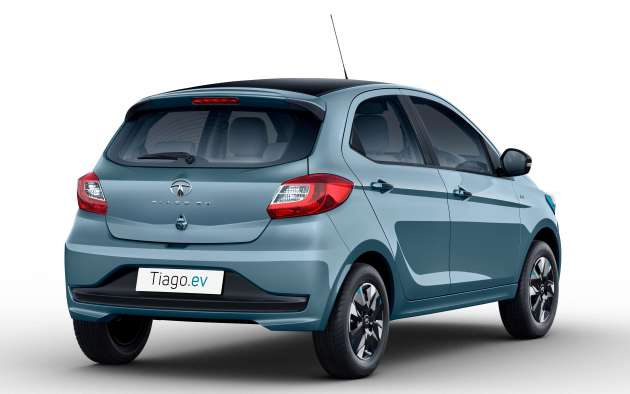




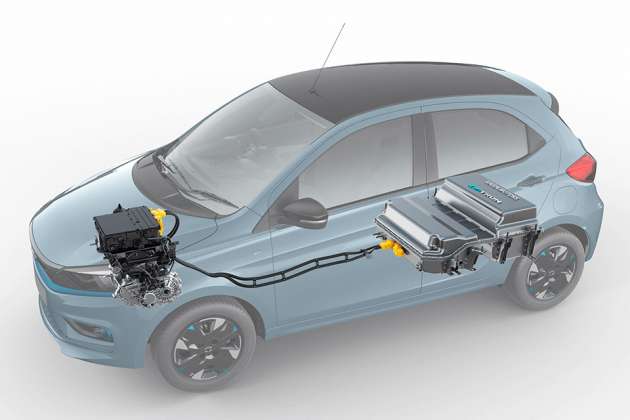
































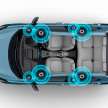

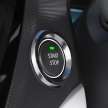








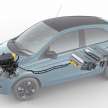
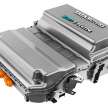







This is what Perodua should come out with at this point. With the rumours of the next generation Axia will have an EV version, it will sell very well and in fact will move the EV industry at a much faster rate. The travel range is just perfect for Klang Valley people.
Most Malaysian automotive companies don’t have any EV technology in hand for business. There are waiting for arahan from their big brother.
24kWh cannot jalan 315km one lar…
U expect Malaysian to sell cheap car like Tata?
Nono nano..
Yup tell us the reason why we still need Proton.
So perodua don’t continue selling selling us shitboxes of old.
Better do a JV with TATA la ini mcm
it’s a non starter.. want an EV in Malaysia, pay over RM150k!!… no cheap stuff to ensure all the ICE cars can shift to make the distributors happy! selling EVs in Malaysia was never about the environment, it’s about the profits!